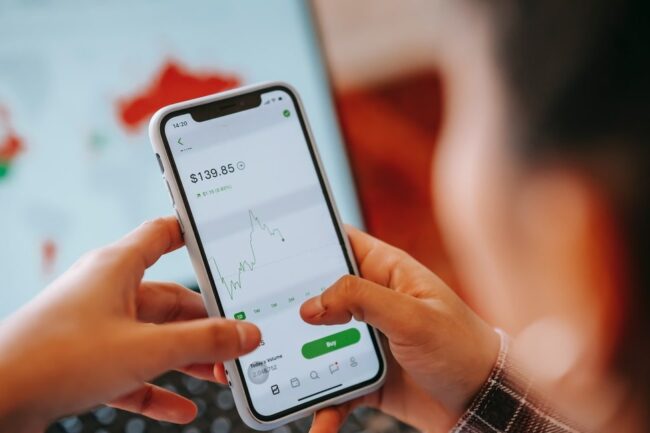At the end of 2022, the landscape of retirement planning saw a major update with the introduction of the SECURE 2.0 Act. Its provisions build upon the earlier SECURE Act of 2019, bringing critical changes that aim to make saving for retirement easier and more advantageous for Americans.
Indeed, the SECURE 2.0 Act stands out as a transformative piece of legislation for both current retirees and those approaching retirement. In many cases, it offers greater control over retirement funds and opens up new avenues for saving.
In this article, we’ll delve into these important changes and how they might influence your retirement planning approach.
UNDERSTANDING THE AIM OF THE SECURE ACT
Several trends are reshaping the retirement savings scene in the U.S., creating a challenging environment for future retirees. Notably, the move away from traditional employer-funded pensions to self-funded plans, combined with lower overall savings and increased life expectancy, is leading to a widespread concern about financial readiness for retirement.
A 2023 Bankrate survey highlights this unease, revealing that over half of American workers feel they aren’t on track with their retirement savings. Meanwhile, 37% of those surveyed believe they’re significantly behind.
The SECURE Act, together with its recent update, SECURE 2.0, seeks to tackle these problems by making it easier for American workers to access retirement accounts and encouraging savings through various incentives. These legislative measures are designed to empower both current retirees and those in the planning stages, offering a solid foundation to enhance financial stability and security.
NOTABLE PROVISIONS WITHIN THE SECURE 2.0 ACT
The SECURE 2.0 Act makes several changes to the rules governing 401(k) plans and IRAs. Here are some of the key provisions affecting retirees and those approaching retirement.
#1: RAISED STARTING AGE FOR REQUIRED MINIMUM DISTRIBUTIONS (RMDS)
The SECURE 2.0 Act introduces important modifications to the regulations governing tax-deferred retirement accounts, including 401(k)s, 403(b)s, and traditional IRAs. Specifically, it alters the starting age for required minimum distributions (RMDs).
Previously, the SECURE Act increased the starting age for RMDs from 70½ to 72. The SECURE 2.0 Act advances this further, setting the RMD age at 73 beginning in 2023, with a subsequent increase to 75 scheduled for January 1, 2033.
The extended timeframe for RMDs offers greater flexibility in managing retirement assets, which could have notable implications for retirees, including:
- Longer Growth Period for Investments. By delaying the starting age for RMDs, your retirement savings have more time to grow tax-deferred. This means you can take advantage of compounding interest for an extra year or more, potentially boosting your retirement funds.
- Increased Flexibility and Better Tax Management. This change allows for greater control over when and how you withdraw from your retirement accounts, granting you more time to plan for tax-efficient distributions.
- Positive Impact on Social Security and Medicare Costs. Delaying RMDs can also help you manage your income levels more effectively. This could lead to lower taxes on Social Security benefits and reduced premiums for Medicare Parts B and D.
- Extended Opportunity for Roth Conversions. With RMDs starting later, you may have a longer window to strategically convert your traditional IRA funds to a Roth IRA, which can be advantageous for managing future tax liabilities.
Additionally, the SECURE 2.0 Act reduces the penalty for not taking an RMD from 50% to 25% of the RMD not taken, and 10% if you correct the error within two years. If you have a Roth 401(k) account, it also eliminates RMDS during your lifetime.
#2: ENHANCED CATCH-UP CONTRIBUTION LIMITS IN THE SECURE 2.0 ACT
The SECURE 2.0 Act is designed to enhance retirement savings opportunities for individuals, particularly as they approach retirement age. As such, one of the key features of the new legislation is the increase in catch-up contribution limits for those aged 50 and above.
In 2024, the catch-up contribution limit is $7,500 for most workplace retirement plans. Beginning in 2025, SECURE 2.0 raises the annual catch-up limit to $10,000 for individuals aged 60 to 63. Furthermore, this limit will be indexed to keep pace with inflation.
This revision has several implications for pre-retirees:
- Encouragement to Save More. For those nearing retirement age, the enhanced catch-up contribution limits provide an incentive to increase your retirement savings during your peak earning years.
- Potential for Reduced Taxable Income. Making larger catch-up contributions can lead to a reduction in taxable income for the year. This is particularly beneficial for those in higher tax brackets, offering immediate tax advantages and serving as an effective tax planning strategy.
- Opportunity to Address Retirement Savings Shortfalls. For those who may not have saved adequately in earlier years, these higher contribution limits offer a chance to substantially increase your retirement funds in a shorter timeframe.
Ultimately, these higher catch-up limits provide pre-retirees with a valuable lever to improve retirement readiness and financial resilience in your retirement years.
#3: MANDATORY ROTH CONTRIBUTIONS FOR HIGH EARNERS
Starting in 2024, SECURE 2.0 indexes the $1,000 IRA catch-up limit to keep pace with inflation. Furthermore, beginning in 2026, individuals who earned more than $145,000 in the previous tax year must make their catch-up contributions to Roth accounts, using after-tax dollars.
These changes have various implications for high earners, including:
- Immediate Tax Implications. Under this new rule, high earners will pay taxes on their catch-up contributions upfront. In other words, you’ll lose the immediate tax deduction that typically comes with traditional pre-tax contributions.
- Tax-Free Growth and Withdrawals. Despite missing out on the initial tax break, Roth accounts offer tax-free earnings and withdrawals (under certain conditions). Moreover, since Roth accounts don’t have RMDs, your investments can grow for longer, potentially enhancing your tax-free income during retirement.
- Encouragement for Tax Diversification. Mandatory Roth contributions encourage tax diversification among retirement accounts, offering you more options to effectively manage your taxable income in your golden years.
- Increased Retirement Savings Over Time. With catch-up contributions indexed to inflation, you can incrementally save more each year, leading to potentially larger retirement savings.
- Reduced Need for Backdoor Roth Strategies. For high earners, the new requirement to contribute directly to Roth accounts may negate the need for backdoor Roth conversions for these contributions.
It’s important to note that the SECURE 2.0 Act doesn’t directly affect the backdoor Roth process for traditional retirement account contributions. However, this provision could introduce a new layer of complexity for high earners who must consider current and future tax rates when deciding between traditional and Roth contributions.
#4: TRANSFERRING UNUSED 529 PLAN FUNDS TO A ROTH IRA
Beginning in 2024, the SECURE 2.0 Act allows beneficiaries of 529 college savings accounts to roll over unused funds to a Roth IRA. While the new rule may benefit many savers, it has specific limitations:
- A beneficiary can transfer a maximum of $35,000 from a 529 plan to a Roth IRA over their lifetime.
- The Roth IRA must be in the beneficiary’s name.
- The 529 account must have been in existence for at least 15 years before any funds can be transferred.
- Beneficiaries can’t transfer any contributions or earnings on contributions from the last five years to a Roth IRA.
- Transfers are subject to annual Roth IRA contribution limits ($7,000 as of 2024), even if the 529 plan has more funds.
This provision of the SECURE 2.0 Act also comes with unique financial planning implications, including:
- Tax-Free Growth and Withdrawals. Funds from a 529 plan can now be rolled over into a Roth IRA and continue to grow tax-free. Furthermore, distributions from the Roth IRA are also tax-free, provided certain conditions are met.
- Avoiding Penalties and Taxes on Unused 529 Funds. Normally, if you withdraw from a 529 plan for non-educational purposes, you face income taxes and a 10% penalty on the earnings. The new provision offers a way to bypass these penalties and taxes, addressing previous concerns about potentially overfunding a 529 plan.
- Enhancing Retirement Planning. If a beneficiary doesn’t need their 529 plan funds for education expenses, they can strategically redirect them to a Roth IRA, opening a new path for retirement savings.
Indeed, the new 529-to-Roth IRA transfer rule is a meaningful step forward, especially for families who may have previously opted for less tax-efficient savings options to avoid overfunding a 529 plan. Nevertheless, a thorough understanding of its nuances is crucial to avoid potentially costly missteps.
NAVIGATING THE SECURE 2.0 ACT WITH CLARITY AND CONFIDENCE
For many retirees and savers, the SECURE 2.0 Act represents an important step forward in addressing the retirement savings crisis in the U.S. Incorporating these changes into your retirement plan may allow for enhanced stability and flexibility in your golden years.
Sloan Advisory Group can help you integrate these provisions into your retirement strategy, maximizing their potential benefits. By providing personalized advice tailored to your financial situation, we can help you navigate retirement with clarity and confidence. Contact us today to begin your retirement planning journey.







